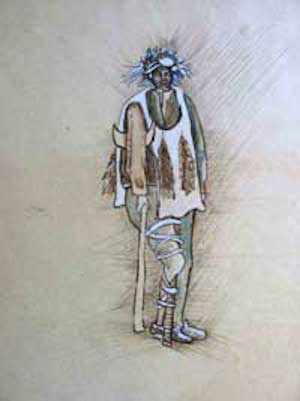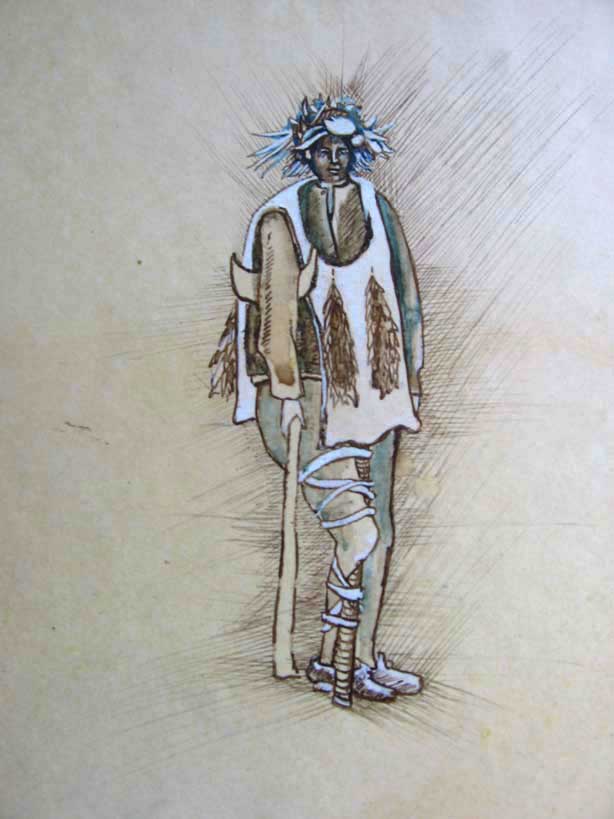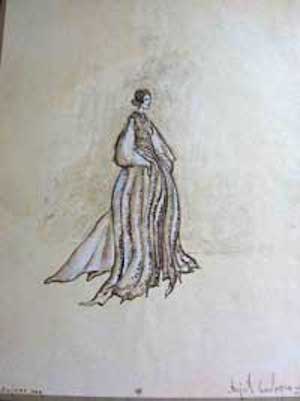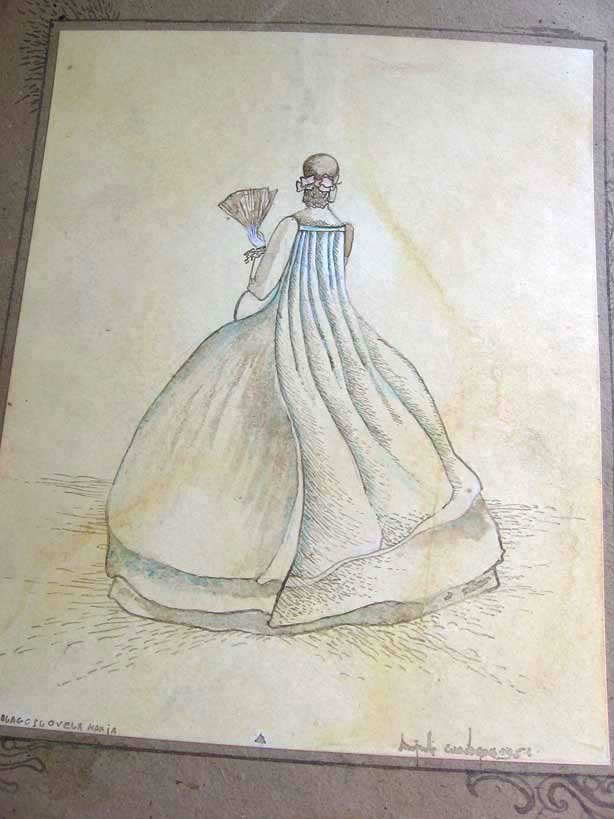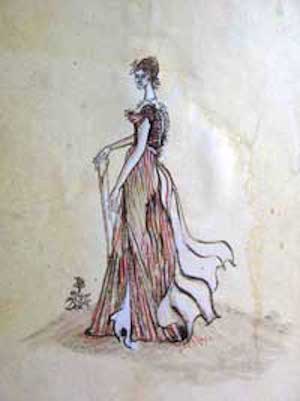1963 – 1967 Costume Design
Costume design and conceptual sketches by Slobodan Dan Paich, 1966, for the theater and artistic director of the Atelje 212 Mira Trailovic. The play, which in the end was never produced, was an adaptation of an obscure morality and nativity play, circa late 18th-early 19th century. The tone of the production was to be discretely ironical and the costumes had to reflect that. On a first glance they are "historical," but unexpected materials, sculptural elements and textures place them in the realm of fantasy and distorted memory.
Click on images to view larger size of drawings
The textures were to be achieved by gluing in certain areas dark yellow sand on a deep brown velvet and tightly sewing gravel and tiny, fingernail size rocks for costume no. 4. For costume no. 5, the crinoline was made of down comforts and old quilts over light wire frame, so that the actress would be impeccable at the top but the dress would be in shambles as it reached the ground, giving visual expression of the character’s denials. Costume no 1 was to have a source of air either off stage through a pipe or battery-operated fan with a current strong enough to move gauzy cape but as silent as possible. Costumes 2 and 3 were to have lots of elements made in tooled and cut leather giving them a more robust look and feel.
Slobodan brought this kind of thinking and aesthetic to the project as Mira Trajlovic was an excellent text interpreter but she left the visual, nonverbal part to the designers. The elements of this thinking were used later for a production of 19th century playwright Joakin Viuic, which toured a theater festival in Istanbul in 1966 and was well received.
The combination of deep respect and homage to couture (both in the 18th century manner and in the early 20th century innovations of Balenciaga, Chanel, Dior) and the sculptural textured approach have been hallmarks of Slobodan's costume design throughout his life. In all his theater productions and as a director/dance maker, he is conceptual and often a production partner to the dressmaker. His costumes, often minimal, are sometimes the only reference for the audiences in the outdoor settings that they are witnessing a performance.


